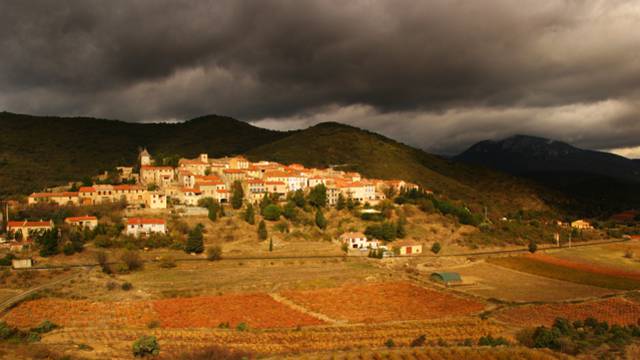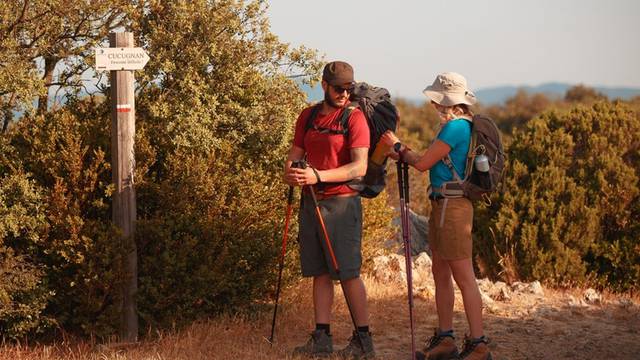HISTORY
Quéribus is cited for the first time in 1020 in the will of Bernard Taillefer, count of Besalù. This count allied with the House of Barcelona in 1111. Later on, in 1162, Alphonse, count of Barcelona, became King of Aragon. The fortress thus became integrated into the northern defensive line of the kingdom of Aragon, which also consisted of Fenolhedés and Peyrepertusés. During the Albigensian Crusade, Quéribus, like Puilaurens, was a final refuge for exiled lords and Cathar heretics. The local commander, Chabert de Barbaira, resisted the King and Church until the siege of 1255. Chabert was imprisoned by Olivier de Termes and surrendered Quéribus to the King of France in exchange for his freedom. The royal architects defied the mountain to make the castle as strong as possible against Aragon. Until the Treaty of the Pyrenees in 1659, they transformed its ramparts to adapt to new military technology: the arrow slits were widened to fit a crossbow, then firearms...
Things to explore
As you walk

Cucugnan
At the foot of Quéribus, the village of Cucugnan offers a picturesque stop for visitors to the castle and hikers along the Cathar Trail. The castle of this 12th-century castral village in the Hautes-Corbières is no longer visible. However, a few remains are still intact, as is the whole village, gathered around the vine-covered mound.

The vicar of Cucugnan
The little Achille Mir Theatre presents a show that recounts the famous history of the vicar of Cucugnan. The silhouettes of this shadow play bring this joyful tale to life, written in Occitan by Achille Mir, then made famous by Alphonse Daudet. Achille Mir is a 'félibre' from the Aude region - a poet and defender of the Occitan language at the end of the 19th century. He was close to Frédéric Mistral, with whom he maintained a correspondence (find out more).

The Omer Mill
The sails of the Omer mill are powered by the powerful Cers wind. You can visit this restored 17th-century building, and admire the machinery, which makes bread, biscuits and tarts (find out more).
About

'Le sentier cathare' (The Cathar Trail)
A delight for hikers. The Cathar Trail passes right by Quéribus castle! Split up into 12 stages across France, the route labelled GR 367 connects the Mediterranean to the Pyrenees, and even crosses over into Spain along the 'Camino de los Buenos Hombres'. From Port-de-Nouvelle to Foix, experienced hikers can enjoy 250km of breath-taking countryside. Find out more about with Cathar Trail Experience (find out more).

Padern
The remains of Padern castle overlook a small village spread out along the banks of the Verdouble, whose fresh, clear waters enchant swimmers. The 'Terroirs du Vertige' appellation produces imaginative wines. Along the Cathar Trail, which reaches Quéribus, the elegant ruins of the Molhet priory rise up from the heath.

Fenouillet
This small village in the Eastern Pyrenees can be reached via a winding road which crosses the river Agly and opens out onto the Saint-Jaume gorges at the Chapel of Notre Dame de Laval, where, a hiking trail leads to a beautiful waterfall. Next, you will arrive at Fenouillet, a pretty village in the shadow of the remains of a seigneurial castle, in an unspoiled mountain landscape. This castle was built before the year 1000, and was the seat of an important seigneurial family.

Since the Middle Ages, Fenolhedés has been the intersection of the Catalan and Occitan worlds. With its rugged landscape made of folded schist, granite and limestone, watered by numerous rivers and streams, Fenolhedés is evidence of the Pyrenean tectonic uplift. It has always been a buffer zone: simultaneously a point of friction and communication between two cultures. This natural region opposite Quéribus is the only place in the Eastern Pyrenees where Occitan is spoken. Along with the Corbières, this incredible landscape is in the process of receiving classification as a Regional Natural Park in order to protect and support and encourage sustainable development in this area.





























